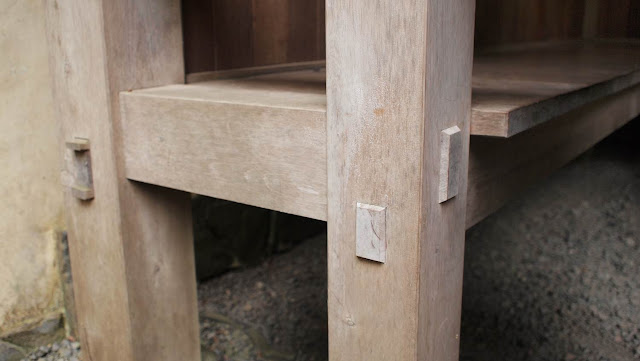It looks gloomy today, like most days since we arrived in Portland. Instead of a hike in the forest, we opted for a visit to the Japanese garden.
 It’s only about less than 10min drive from downtown. The Japanese garden sits in one of the many hills dotting the west of downtown area. Tickets are less than $10 per/person, though annual membership is available for $75 for two people.
It’s only about less than 10min drive from downtown. The Japanese garden sits in one of the many hills dotting the west of downtown area. Tickets are less than $10 per/person, though annual membership is available for $75 for two people.The entrance leading up to the gate of the garden is a paved path meandering the thick woods with tall spruces, maples and other trees I can’t name. Once inside the gate, be prepared to be taken on a journey of texture study and sensory overload.
The general philosophy of a Japanese garden design is to create more with little. Japanese gardens tend to be on a small piece of land. But with carefully crafted paths, divisions and vegetation, the visitor gets a different view every few steps. This garden is no exception. Everywhere you look there’s a lot going on.
There’s also a great mix of various elements. On the ground, earth is generously covered with moss. Paths are paved with a few different textures, straight-cut slates juxtaposing irregular-shaped stones. Vegetation mixes with man-made structure to help frame a space. A body of water is always circled by carefully placed mossy rocks and trees. Wooden bridges are common. Most of them are built to make you spend more time on the water with its zigzagging form and attention to detail in construction.
The overall structure of a building is very simple and streamlined. But every surface you look would have some level of texture on it that makes it difficult for you to look away.
The texture theme also extends to the fascination of Zen garden, where a field of fine gravels is painstakingly raked to create a rippling sandscape. It’s not hard to imagine that level of zen-ness that’s required to create the perfect ripples. The garden sits on a mere 5-acre land, but the attention to detail per inch of land is greater than anything we’ve seen before.
Craftsmanship is another stunning feat in this garden. Pieces of wood are rarely joined by nails. If you look closer, you’d see intricate joints and above the board details that beg you to look longer.Sometimes we would sit on a bench in a little tuck-away corner for a few minutes listening to the sound of a nearby stream, looking around at all the carefully crafted picture-perfect garden views, thinking that maybe, just maybe for a few minutes we could achieve some level of inner zen.





















No comments:
Post a Comment